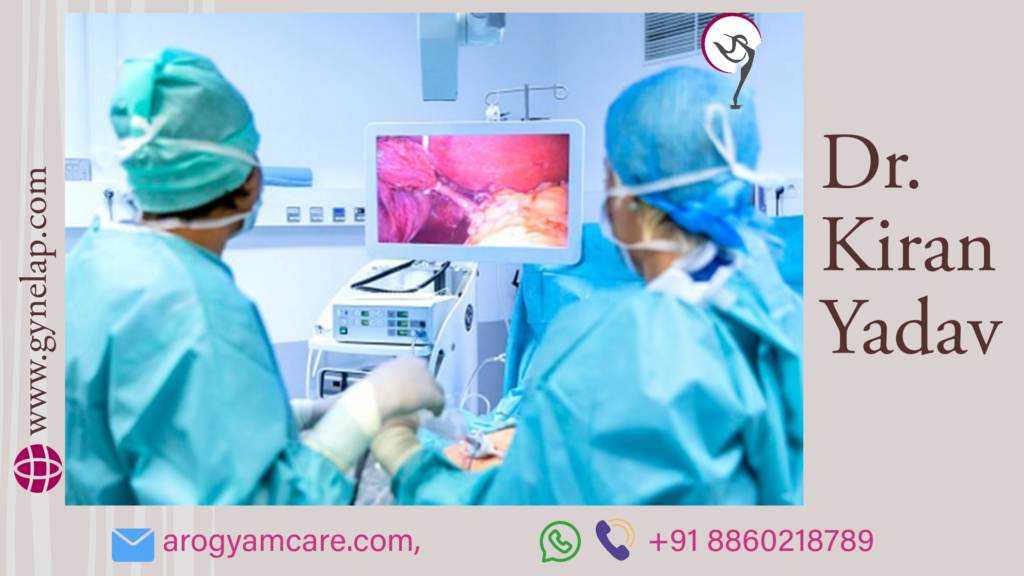Hysterectomy: Understanding the Surgical Procedure, Types, and Recovery
A hysterectomy is a surgical procedure to remove the uterus, and in some cases, additional reproductive organs like the cervix, ovaries, and fallopian tubes. It is one of the most common surgeries performed on women, primarily to treat various health conditions such as uterine fibroids, endometriosis, chronic pelvic pain, abnormal bleeding, and cancer of the reproductive organs.
This surgery can have significant physical and emotional effects, especially for women of childbearing age, as it permanently ends the ability to become pregnant. Understanding the different types of hysterectomy, reasons for the procedure, and recovery process is essential for making informed healthcare decisions.
1. Types of Hysterectomy
There are several types of hysterectomy, depending on the extent of the uterus and surrounding structures that are removed:
Total Hysterectomy: This is the most common type of hysterectomy, where both the uterus and cervix are removed. It may also include the removal of one or both ovaries and fallopian tubes (called a salpingo-oophorectomy), depending on the condition being treated.
Subtotal or Partial Hysterectomy: In this procedure, only the uterus is removed, and the cervix is left in place. This option may be chosen if the cervix is healthy and there is no history of cervical disease.
Radical Hysterectomy: This is a more extensive surgery, typically performed for certain types of cancer. It involves the removal of the uterus, cervix, the upper part of the vagina, and surrounding tissues, which may include lymph nodes. The fallopian tubes and ovaries may also be removed.
Hysterectomy with Bilateral Salpingo-Oophorectomy: This procedure involves the removal of the uterus along with both ovaries and fallopian tubes. This is often done to treat or prevent conditions like ovarian cancer.
2. Why is a Hysterectomy Performed?
A hysterectomy may be recommended for various medical conditions, including:
Uterine Fibroids: Non-cancerous growths in the uterus that can cause heavy bleeding, pain, and other complications. A hysterectomy may be considered if other treatments, such as medication or less invasive surgeries, have not been effective.
Endometriosis: A condition where tissue similar to the lining of the uterus grows outside the uterus, causing pain, bleeding, and sometimes infertility. In severe cases, a hysterectomy may be necessary to relieve symptoms.
Chronic Pelvic Pain: Persistent pain in the pelvic region that is not relieved by other treatments. A hysterectomy may be an option if the pain is due to issues with the uterus or other reproductive organs.
Adenomyosis: A condition where the inner lining of the uterus grows into the uterine wall, leading to heavy bleeding and pain. A hysterectomy may be recommended if other treatments are unsuccessful.
Abnormal Uterine Bleeding: Unexplained or heavy menstrual bleeding that does not respond to medications or less invasive procedures.
Uterine, Cervical, or Ovarian Cancer: Hysterectomy may be the recommended treatment for certain cancers of the reproductive organs, often combined with other treatments such as radiation or chemotherapy.
Prolapsed Uterus: When the uterus slips into the vaginal canal due to weakened pelvic muscles, a hysterectomy can be performed to correct the prolapse and relieve symptoms like discomfort and urinary issues.
3. Types of Hysterectomy Surgeries
There are different approaches to performing a hysterectomy, depending on the patient’s condition, health history, and the surgeon’s recommendation:
Abdominal Hysterectomy: The uterus is removed through a large incision in the lower abdomen. This is often done when a larger area needs to be accessed or for cases like cancer. Recovery time is longer due to the larger incision.
Vaginal Hysterectomy: The uterus is removed through the vagina, leaving no visible scars. This method is less invasive and generally has a shorter recovery time than an abdominal hysterectomy.
Laparoscopic Hysterectomy: This minimally invasive surgery uses small incisions and a camera (laparoscope) to remove the uterus. Recovery time is quicker, and scarring is minimal. It may be combined with vaginal hysterectomy, called a laparoscopic-assisted vaginal hysterectomy (LAVH).
Robotic-Assisted Laparoscopic Hysterectomy: A robot is used to assist the surgeon in performing a laparoscopic hysterectomy with precision. This method is also minimally invasive and allows for faster recovery.
4. Recovery After Hysterectomy
Recovery time after a hysterectomy depends on the type of surgery performed and the individual’s health. In general:
Hospital Stay: Most patients stay in the hospital for 1 to 2 days after a vaginal or laparoscopic hysterectomy, while an abdominal hysterectomy may require a longer stay of 2 to 4 days.
Rest and Activity: For an abdominal hysterectomy, recovery can take 6 to 8 weeks, while recovery from a laparoscopic or vaginal hysterectomy is usually 4 to 6 weeks. During this time, patients should avoid heavy lifting, strenuous activity, and sexual intercourse to allow for proper healing.
Pain Management: Pain and discomfort are common after surgery but can be managed with medication. Laparoscopic and vaginal hysterectomies tend to cause less pain than abdominal surgery.
Emotional Recovery: The emotional effects of a hysterectomy can be significant, especially for women who are still of childbearing age. The inability to have children, changes in body image, and hormonal fluctuations (if the ovaries are removed) can lead to feelings of sadness or depression. It is important to seek emotional support and counseling if needed.
5. Potential Risks and Complications
Like any surgery, hysterectomy carries potential risks, including:
Infection: The risk of infection is present with any surgical procedure. Proper wound care and hygiene are crucial to avoid this.
Bleeding: Excessive bleeding may occur during or after the surgery, sometimes requiring a blood transfusion.
Damage to Surrounding Organs: There is a small risk of damage to nearby organs such as the bladder, ureters, or intestines during the procedure.
Early Menopause: If both ovaries are removed, the woman will enter menopause immediately, which can lead to symptoms like hot flashes, mood swings, and vaginal dryness.
Blood Clots: Prolonged bed rest and reduced mobility after surgery can increase the risk of blood clots forming in the legs or lungs.
How Laparoscopic Hysterectomy is done?
Gynae laparoscopic surgeon uses a laparoscope, a thin tube with a light and a camera at the end, to guide the removal of the uterus. The laparoscope is inserted through a small incision near the belly button, and other surgical instruments are inserted through two or three other small incisions in the lower abdomen. The surgeon can see the inside of the abdomen on a monitor and perform the surgery with precision and accuracy.
Gynaecological Conditions treated by Laparoscopic Hysterectomy
- Uterine fibroids: Noncancerous growths that cause heavy bleeding, pain, or pressure in the pelvis. Click to read about uterine fibroid.
- Endometriosis: A condition where the tissue that lines the uterus grows outside of it, causing pain, bleeding, or infertility.
- Adenomyosis: A condition where the tissue that lines the uterus grows into its muscular wall, causing heavy bleeding or pain.
- Uterine prolapse: A condition where the uterus slips down into the vagina due to weakened pelvic muscles or ligaments.
- Abnormal uterine bleeding: A condition where the bleeding from the uterus is too heavy, too frequent, or irregular.
- Chronic pelvic pain: A condition where there is persistent or recurrent pain in the lower abdomen or pelvis that interferes with daily activities or quality of life.
- Gynecologic cancer: A cancer that affects the uterus, cervix, ovaries, or fallopian tubes. A laparoscopic hysterectomy may also be done as a preventive measure for women who have a high risk of developing gynecologic cancer due to genetic factors or family history. Click to read about uterus cancer and cervical cancer.
Advantages/ benifits of Laparoscopic Hysterectomy
Laparoscopic hysterectomy has fewer side effects compared to open hysterectomy. Benefits of laparoscopic hysterectomy by best laparoscopic gynaecology surgeon includes:
- Smaller incisions and scars
- Less blood loss and risk of infection
- Less pain and need for pain medication
- Shorter hospital stay and recovery time
- Faster return to normal activities
Precautions/ advice after laparosopic hysterectomy
Precautions and best advice after hysterectomy by laparoscopy as suggested by senior gynecologists includes:
- Avoid strenuous activities.
- Drink plenty of fluids and eat a balanced diet.
- Take your medication as prescribed
- Keep your incisions clean and dry and watch for signs of infection such as redness, swelling, pus, or fever
- Avoid lifting anything heavier or doing any twisting or bending motions
- Avoid sexual intercourse for six weeks or until your doctor says it is safe
- Seek medical attention if you have severe pain, heavy bleeding, foul-smelling discharge, difficulty urinating, shortness of breath, chest pain, or leg swelling
6. Life After a Hysterectomy
The long-term effects of a hysterectomy can vary based on the individual and whether the ovaries were removed. Some women experience improved quality of life, especially if the surgery alleviates chronic pain, bleeding, or other symptoms. However, women who have had their ovaries removed may face menopause-related symptoms and will no longer produce hormones like estrogen and progesterone, which can affect bone health and heart disease risk. Hormone replacement therapy (HRT) may be recommended in such cases.
Women should also be aware that after a hysterectomy, regular pelvic exams may still be necessary, especially if the cervix or part of the ovaries were left intact.
7. Alternatives to Hysterectomy
In some cases, less invasive alternatives to a hysterectomy may be available, such as:
Medications: Hormonal treatments, pain relievers, and other medications can sometimes manage symptoms caused by fibroids, endometriosis, or heavy bleeding.
Uterine Fibroid Embolization: This procedure shrinks fibroids by cutting off their blood supply without removing the uterus.
Endometrial Ablation: A minimally invasive procedure that removes the lining of the uterus to treat abnormal bleeding.
Myomectomy: A surgery to remove uterine fibroids while leaving the uterus intact, preserving fertility.
Conclusion
A hysterectomy is a significant surgical procedure that offers relief for a variety of health conditions, but it comes with its own risks and permanent changes. Understanding the reasons for the surgery, the types of procedures available, the recovery process, and possible alternatives is essential for making informed decisions. For women facing conditions like fibroids, endometriosis, or reproductive cancers, a hysterectomy can greatly improve their quality of life, but it’s important to consider the emotional and physical impact of the surgery as well. Consulting with a healthcare provider is key to choosing the best treatment option for each individual situation.



